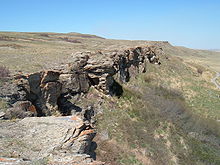
Canada has a large domestic and foreign tourism industry. The second largest country in the world, Canada's wide geographical variety is a significant tourist attractor. Much of the country's tourism is centred in the following regions: Toronto, Montreal, Quebec City, Vancouver/Whistler, Niagara Falls, Vancouver Island, Canadian Rockies, British Columbia's Okanagan Valley, Churchill, Manitoba and the National Capital Region of Ottawa-Gatineau. The large cities are known for their culture, diversity, as well as the many national parks and historic sites.
The Southern Alberta Institute of Technology (SAIT) is a polytechnic institute in Calgary, Alberta, Canada. SAIT offers more than 110 career programs in technology, trades and business. Established in 1916, it is Calgary's second oldest post-secondary institution and Canada's first publicly funded technical institute.

Fort Calgary was a North-West Mounted Police outpost at the confluence of the Bow and Elbow rivers in present-day Calgary, Alberta, Canada. Originally named Fort Brisebois, after the outpost's first commander, the outpost was renamed Fort Calgary in June 1876.

Albert Lacombe, known as Father Lacombe, was a French-Canadian Roman Catholic missionary who travelled among and evangelized the Cree and also visited the Blackfoot First Nations of northwestern Canada. He is now remembered for having brokered a peace between the Cree and Blackfoot, negotiating construction of the Canadian Pacific Railway through Blackfoot territory, and securing a promise from the Blackfoot leader Crowfoot to refrain from joining the North-West Rebellion of 1885.
Alberta Provincial Highway No. 2, commonly referred to as Highway 2 or the Queen Elizabeth II Highway, is a major highway in Alberta that stretches from the Canada–United States border through Calgary and Edmonton to Grande Prairie. Running primarily north to south for approximately 1,273 kilometres (791 mi), it is the longest and busiest highway in the province carrying more than 170,000 vehicles per day near Downtown Calgary. The Fort Macleod—Edmonton section forms a portion of the CANAMEX Corridor that links Alaska to Mexico. More than half of Alberta's 4 million residents live in the Calgary–Edmonton Corridor created by Highway 2.
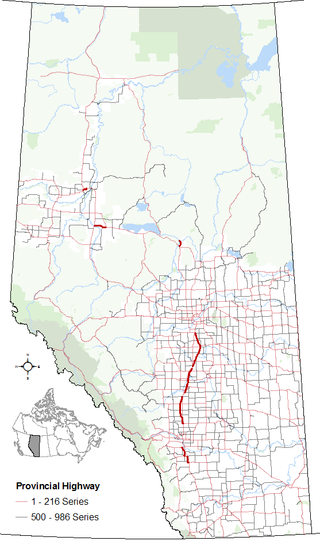
Alberta Provincial Highway No. 2A is the designation of six alternate routes off Highway 2 in Alberta, Canada. In general, these are original sections of Highway 2, such as the southern portion of Macleod Trail in Calgary. They passed through communities before limited-access freeways were built to shorten driving distance, accommodate heavier volumes and to bypass city traffic. Portions of the alignment of Highway 2A follow the route of the former Calgary and Edmonton Trail.

Mewata Armoury is a Canadian Forces reserve armoury in Calgary, Alberta, Canada. Mewata ( is derived from the Cree word ᒥᔭᐋᐧᑕᒼ, meaning "Oh, be joyful".

Alberta has been a tourist destination since the early days of the 20th Century, with attractions including national parks, National Historic Sites of Canada, urban arts and cultural facilities, outdoor locales for skiing, hiking and camping, shopping locales such as West Edmonton Mall, outdoor festivals, professional athletic events, international sporting competitions such as the Commonwealth Games and Olympic Winter Games, as well as more eclectic attractions.
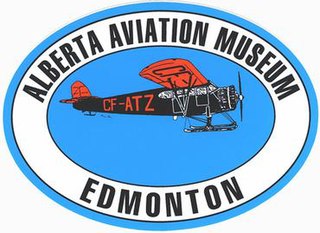
The Alberta Aviation Museum is an aviation museum located in Edmonton, Alberta, Canada. The museum is located on-site at the former Edmonton City Centre Airport on the southwest corner of the field.

Rutherford House is a historic building and museum in the Strathcona area of Edmonton, Alberta, Canada. The structure was the home of the first Premier of Alberta, Alexander Cameron Rutherford, from 1911 to 1941, and has subsequently been designated as an Alberta provincial historic site.
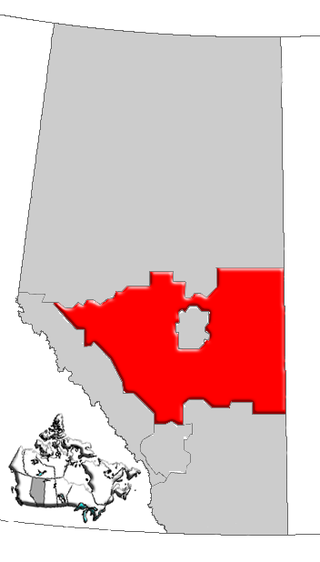
Central Alberta is a region located in the Canadian province of Alberta.
Heritage buildings in Edmonton, as elsewhere in Canada, may be designated by any of the three levels of government: the Government of Canada, the Government of Alberta, or the City of Edmonton.

South Edmonton station, known as Strathcona station prior to 1932, was built by the Calgary and Edmonton Railway in what was then the City of Strathcona, Alberta. Construction on the station was started in 1907, completed in 1908, and expanded in 1910.

Lougheed House, or as it was originally known Beaulieu, is a National Historic Site located in the Beltline district of Calgary, Alberta. Originally constructed in 1891 as a home for Senator James Alexander Lougheed KCMG PC KC and his wife Isabella Clarke Hardisty, the structure has since become an iconic heritage building in Calgary. Lougheed House is operated by Lougheed House Conservation Society, an independent, non-profit society devoted to the restoration and public enjoyment of the historic house and its Gardens.
Okotoks-High River was a provincial electoral district in Alberta, Canada, mandated to return a single member to the Legislative Assembly of Alberta from 1930 to 1971.
In Canada, heritage conservation deals with actions or processes that are aimed at safeguarding the character-defining elements of a cultural resource so as to retain its heritage value and extend its physical life. Historic objects in Canada may be granted special designation by any of the three levels of government: the federal government, the provincial governments, or a municipal government. The Heritage Canada Foundation acts as Canada's lead advocacy organization for heritage buildings and landscapes.
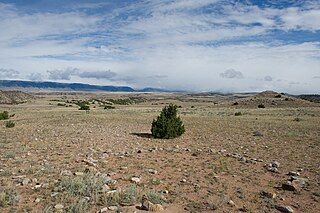
Tipi rings are circular patterns of stones left from an encampment of Post-Archaic, protohistoric and historic Native Americans. They are found primarily throughout the Plains of the United States and Canada, and also in the foothills and parks of the Rocky Mountains.

Calgary City Hall, is the seat of government for Calgary City Council, located in the city's downtown core of Calgary, Alberta, Canada. The historic building completed in 1911 serves as the offices for Calgary City Council, consisting of the office of the Mayor, fourteen Councillors and municipal Clerk. Calgary City Hall originally housed the municipal council and portions of administration from its completion in 1911 until the construction of the Calgary Municipal Building adjacent to Old City Hall in 1985, which currently houses the offices of 2,000 civic administrators.

